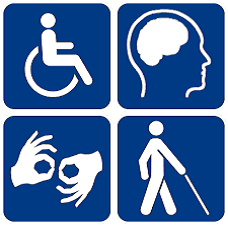Communication

During a disaster, effective communication is critical. As such, information delivered at press conferences by public officials and broadcasted on television during a disaster needs to be accessible, consumable, and actionable by the whole community.
Government Code § 8593.3 (Assembly Bill (AB) 2311, Brown, Chapter 520, 2016) raised the bar for inclusive emergency management by requiring that a county, including a city and county, upon the next update of its Emergency Operations Plan, integrate access and functional needs-related considerations. Concerning emergency communications, specifically, jurisdictions must indicate how they will serve the access and functional needs community by addressing the inclusion and integration of interpreters, translators, and assistive technology.
The goal is to ensure that communication is equally effective for everyone.
The Cal OES Office of Access and Functional Needs coordinates closely with community partners and local, state, and federal jurisdictions to ensure the communication needs of all Californians are identified and addressed before, during, and after disasters.
All jurisdictions should understand how to utilize the following communication resources:
- Sign language interpreters for individuals who are deaf or hard of hearing;
- Translation services for individuals and households whose primary language is not English;
- Alternative formats for individuals who are blind or have low vision;
- Messaging using plain language.
For detailed guidance on improving disaster-related communications, visit the Communications section of the AFN Library.
Alert and Warning Notification Systems
To be effective, alert and warning notification systems must be capable of relaying emergency-related information through coordinated, prompt, reliable, and actionable messaging. All alerts should be clear, consistent, accessible, and culturally and linguistically appropriate.
Alert and warning notifications should:
- Use plain language understandable at a 3rd or 4th grade level.
- Be available in multi-lingual formats.
- Use high contrast colors, sans serif fonts, and large text.
- Utilize closed captioning as needed.
Individuals from the deaf and hard of hearing community have historically encountered barriers receiving accessible life-saving information. To address this issue, ensure all videos, press, conferences, town, halls, and public forums integrate American Sign Language (ASL) interpretation.
Individuals can sign up to receive emergency alerts by visiting the Cal Alert’s Learn How to Sign Up for Alerts in Your County website.
These actions help ensure your messages can be received, understood, and acted upon by the communities you serve.
Remember the following:
- Emergency Notification Language Templates are available in multiple languages on the calalerts.org website.
- Effective communication is a requirement mandated through the Americans with Disabilities Act (ADA).
- Jurisdictions should be prepared to use ASL interpreters during all press conferences, town hall meetings, community briefings, etc.
- Pubic Information Officers (PIOs) should remind broadcasters to keep the ASL interpreter in the video frame at all times.
Social Media, Websites, and Documents
Social Media has become a critical component of emergency preparedness, response, and recovery.
Social media platforms are continually developing new accessibility features to make content more inclusive. Below are links to the accessibility webpages of some popular social media platforms:
- Facebook (https://www.facebook.com/accessibility/)
- LinkedIn(https://www.linkedin.com/accessibility)
- X (formally known as Twitter)(https://help.twitter.com/en/resources/accessibility)
- TikTok (https://www.tiktok.com/accessibility/)
Free Training Opportunities
The Cal OES, through the Office of Access and Functional Needs (OAFN), offers free monthly training courses for emergency managers and community-based organizations on creating accessible documents.
The courses, which focus on the essential steps to creating accessible content in Word, Excel, and Adobe Acrobat, are:
- How to Create Accessible Microsoft Office Documents
- How to Create Accessible PDF Documents
- How to Create Accessible Forms
Follow the steps below to register for free classes:
- Visit the Website: Go to the California Specialized Training Institute (CSTI) website, csti-ca.csod.com.
- Log In or Create an Account: If you already have an account, log in. If not, create one.
- Browse Training: Look for the option that says “Browse Training” on the website.
- Select the Course: Find the course titled “How to Create Accessible Office Documents” and click on the course title. This should reveal more options for different dates and times.
- View Details: Choose the session of your choice and click “View Details” selection.
- Enroll: Click “Request.” A confirmation email will follow confirming enrollment.
For assistance or questions, contact Cal OES’s Digital Accessibility Coordinator at OAFN@caloes.ca.gov.
Disaster Response Interpreter (DRI) Program
The Cal OES Office of Access and Functional Needs (OAFN), facilitates the Disaster Response Interpreter (DRI) Program. The DRI Program trains and credentials certified sign language interpreters to provide services before, during, and after disasters. The training emphasizes emergency response and recovery activities and provides practice opportunities for press conferences, shelters, and other public events. The program stresses shelter operations, recovery services, and readiness procedures. Participants undergo a Department of Justice Live Scan and receive a disaster service worker badge upon completion.
Contact OAFN@caloes.ca.gov for more information.
